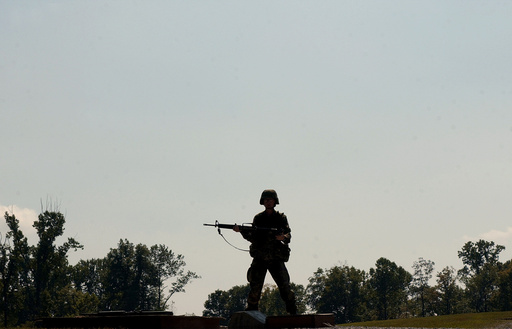LOUISVILLE, Ky. — President Donald Trump has announced that Elon Musk will be inspecting Fort Knox, the famed U.S. facility that holds the nation’s gold reserves, to ensure that the gold remains intact.
Treasury Secretary Scott Bessent confirmed that an annual audit takes place to account for the gold, asserting that “all the gold is present and accounted for.”
The United States Bullion Depository at Fort Knox has been safeguarding the country’s gold bullion since 1937 and is synonymous with security. In addition to housing gold, Fort Knox also serves as the Army’s human resources command center and organizes the largest annual training event for the Army each summer.
### Fort Knox’s Background and Location
Situated approximately 35 miles south of Louisville, Fort Knox spans 109,000 acres across three counties in Kentucky: Bullitt, Hardin, and Mead.
Originally established as Camp Knox during World War I, it evolved into an artillery training center. A permanent installation was confirmed in 1932, and it was renamed Fort Knox. The first shipment of gold reached Fort Knox in 1937, accompanied by the 1st Cavalry Regiment, which was responsible for its protection.
As World War II began in Europe, the Army formed the Armored Force at Fort Knox, leading to the introduction of thousands of soldiers to tank training. For nearly eight decades, Fort Knox earned the reputation of being the “Home of Cavalry and Armor.”
In 2005, the Army transitioned the Armor Center and School to Fort Benning in Georgia, and the Human Resource Command Center of Excellence was formed at Fort Knox. Since then, Fort Knox has become the venue for the Army’s largest summer training event.
### Gold Reserves at Fort Knox
According to reports from the U.S. Mint, Fort Knox holds 147.3 million ounces of gold, making it home to about half of the Treasury’s total gold reserves.
In response to questions about whether any gold has been removed, the Mint indicates that only minimal amounts have been taken for purity testing during routine audits. Aside from these tests, there have been no transfers of gold in or out of the depository for many years, and the book value of the gold is cited as $42.22 per ounce.
### Security Measures at Fort Knox
Fort Knox is famously secure. The specific details of the facility, including the building and its contents, are closely guarded secrets, with no single person fully aware of all the protocols needed to access the vault.
What is publicly known includes the construction materials used: 16,000 cubic feet of granite, 4,200 cubic yards of concrete, 750 tons of reinforcing steel, and 670 tons of structural steel went into building it. Guarding measures are intense, and visitation to the site has been limited to just three occasions.
### Viewing the Gold Reserves
In 1974, the U.S. Mint allowed a group of journalists and a Congressional delegation to enter the vaults to observe the gold reserves following rumors suggesting that gold had been taken out. Up until that visit, only President Franklin D. Roosevelt had access outside of authorized personnel.
There was another rare opening in 2017 when Treasury Secretary Steve Mnuchin, along with Kentucky Governor Matt Bevin and other congressional members, viewed the gold. Current Treasury Secretary Scott Bessent has expressed readiness to facilitate a visit for any senators interested in inspecting the vaults.
### Fort Knox’s Cultural Impact
The gold depository at Fort Knox is widely regarded as nearly impenetrable, earning a notable spot in popular culture. One of the earliest references appeared in a 1952 Looney Tunes cartoon featuring Bugs Bunny and Yosemite Sam on a quest for gold at Fort Knox. Additionally, Fort Knox has been depicted in films, including the classic 1964 James Bond film “Goldfinger” and the 1981 comedy “Stripes,” which had parts filmed at the location.
